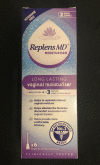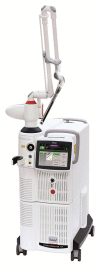Modern management of genitourinary syndrome of menopause
- PMID: 33718942
- PMCID: PMC7946389
- DOI: 10.12703/r/10-25
Modern management of genitourinary syndrome of menopause
Abstract
The genitourinary syndrome of menopause (GSM) is the accepted term used to describe the broad spectrum of genitourinary tract symptoms and signs caused by the loss of endogenous sex steroids that occurs at the time of and after the menopause. Global improvements in healthcare have resulted in an ageing population. Today, women are spending 40% of their lives in the postmenopausal state, and with 50-70% of postmenopausal women reporting symptomatic GSM, safe and efficacious treatments are needed for this troublesome condition. This article reviews current evidence for non-pharmacological and pharmacological treatments with a focus on novel and minimally invasive procedures such as energy-based devices (CO2 laser, YAG laser), hyaluronic acid, dehydroepiandrosterone, and selective oestrogen receptor modulators.
Keywords: CO2 laser; DHEA; Er:YAG; GSM; Genitourinary syndrome of menopause; Hyaluronic acid; Intrarosa; Laser; Lubricants; Moisturisers; Oestrogen; Orasterone; Ospemifene; Osphena; Ovestin; SERMS; Vagifem.
Copyright: © 2021 Cardozo L et al.
Conflict of interest statement
The authors declare that they have no competing interests.No competing interests were disclosed.No competing interests were disclosed.
Figures












References
-
- United Nations: World Population Prospects 2019: Highlights (ST/ESA/SER.A/423). 2019. Reference Source
-
- Portman DJ, Gass MLS, Vulvovaginal Atrophy Terminology Consensus Conference Panel: Genitourinary syndrome of menopause: New terminology for vulvovaginal atrophy from the International Society for the Study of Women's Sexual Health and the North American Menopause Society. Menopause. 2014; 21(10): 1063–8. 10.1097/GME.0000000000000329 - DOI - PubMed
Publication types
LinkOut - more resources
Full Text Sources
